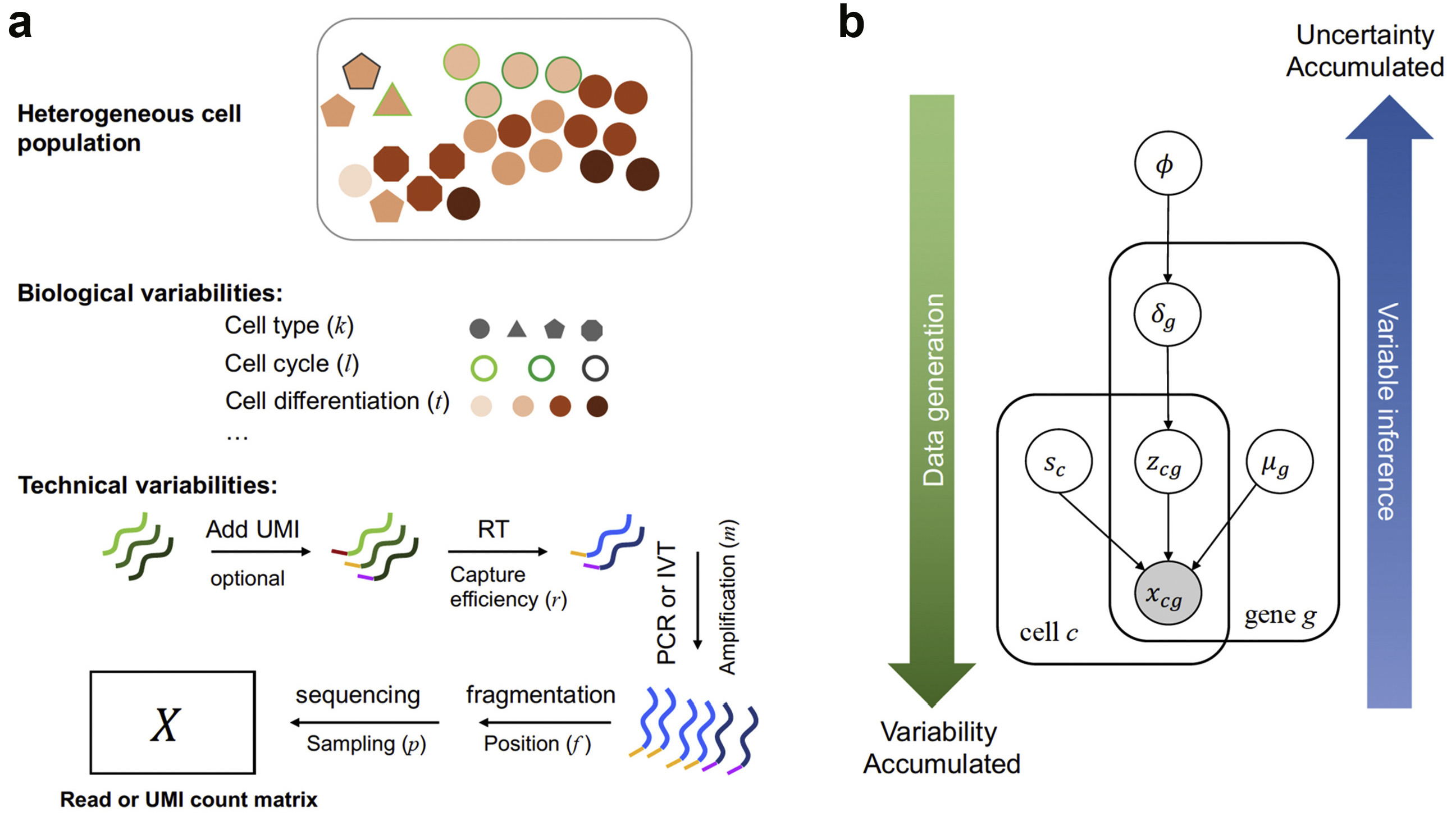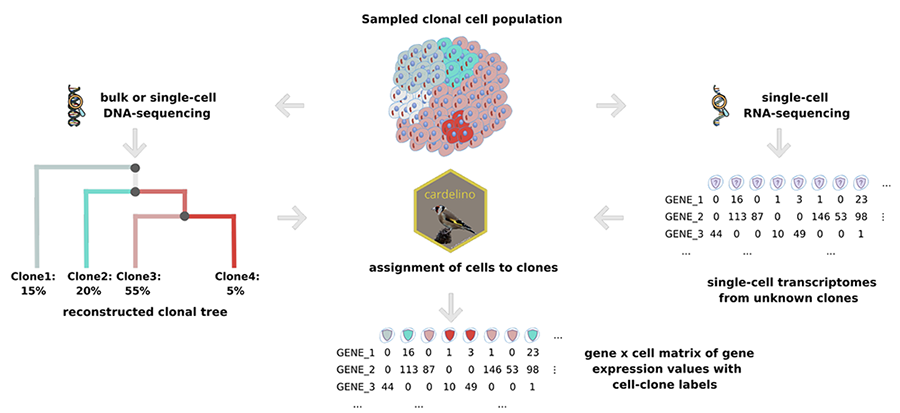Research interests
We are fascinated by how data science accelerates biomedical science,
not only as a tool but also as a way of thinking, right in this era
with exponential growth of data.
Within our lab, we aim to formulise a range of biomedical challenges
into data science problems by designing powerful statistical models
and developing efficient algorithms, including Markov chain Monte
Carlo and variational inference. Our work is mostly problem-driven
and methodology focused, and we benefit greatly from close collaborations
with experimental labs. Currently, we have a focus on the following themes.
You can have a look at our continuous reading in our
paper monitoring
archive.
We also activately host
HKU cross-lab Bioinformatics Seminar (monthly).


